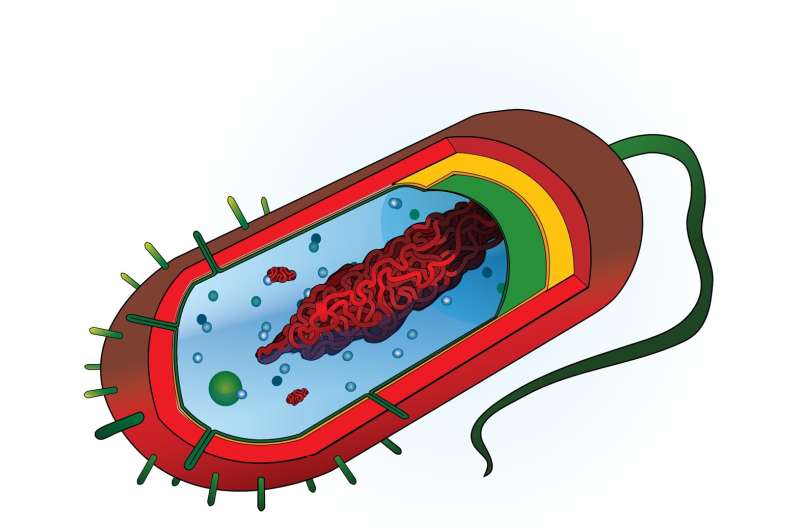Nonequilibrium mechanism of bacterial flagellar motor switching revealed

In work published in Physical Review Letters, a research group led by Prof. Yuan Junhua and Prof. Zhang Rongjing from the University of Science and Technology of China (USTC) of the Chinese Academy of Sciences proposed a novel nonequilibrium mechanism in the allosteric regulation of motor switching, based on a precise measurement of the switching dynamics of the bacterial flagellar motor. This mechanism also has implications for nonequilibrium mechanisms regulated by other molecular motors.
Flagellar-driven bacterial swimming is a typical motility mechanism of bacteria, which is the key to bacterial survival and host infection. On the one hand, the flagellar motor generates torque to drive the flagellar filament to rotate, and enables bacteria to swim. On the other hand, the motor switches the flagellar rotational direction (counterclockwise or clockwise) to adjust the run-and-tumble swimming pattern.
The dynamic properties of the flagellar motor are greatly affected by external loads, and motor switching for motors under low to high loads has been investigated in previous studies. However, due to the technical limitations, the switching dynamics of flagellum motor with extremely high load and even at stall have not been studied.
Researchers in this work utilized optical tweezers to stall the flagellar motor, and studied the switching dynamics of the motor at stall with the high spatial-temporal resolution of optical tweezers, realizing the accurate measurement.
By further comparing the previous results of dynamic properties under other loads, researchers proposed a new mechanism by which the asymmetric torque under clockwise and counterclockwise rotation of the motor provides the nonequilibrium energy input for motor switching. This novel nonequilibrium mechanism can explain the dynamic properties of motor switching under all loads uniformly.
This finding provides insights into the possible nonequilibrium thermodynamic mechanisms of other allosteric regulation and also explains the important physiological significance of torque asymmetry under two rotating conditions.
More information: Bin Wang et al, Dynamics of Switching at Stall Reveals Nonequilibrium Mechanism in the Allosteric Regulation of the Bacterial Flagellar Switch, Physical Review Letters (2021). DOI: 10.1103/PhysRevLett.127.268101
Journal information: Physical Review Letters
Provided by University of Science and Technology of China



















